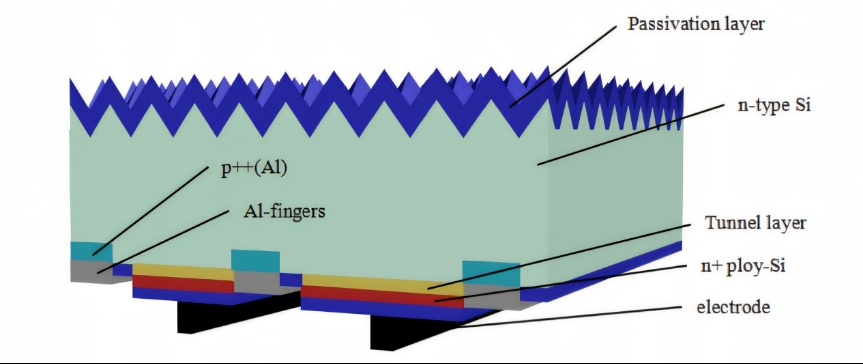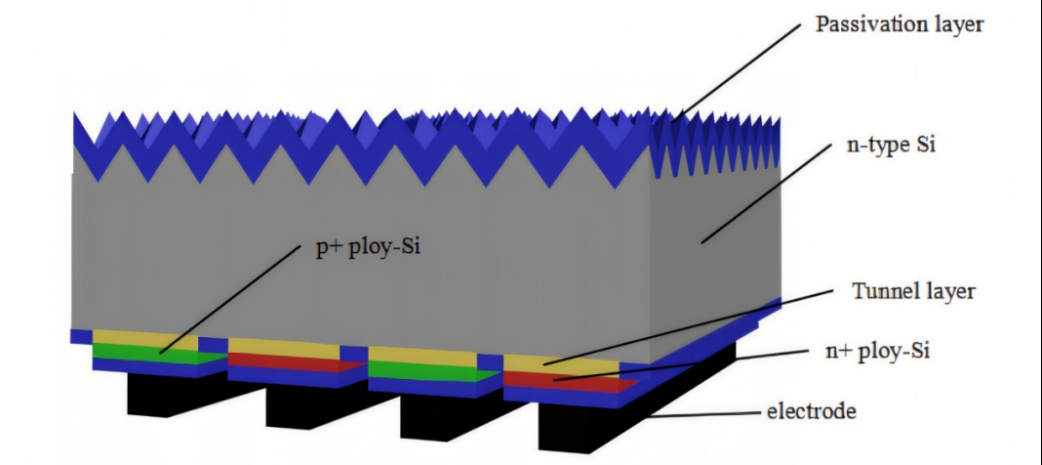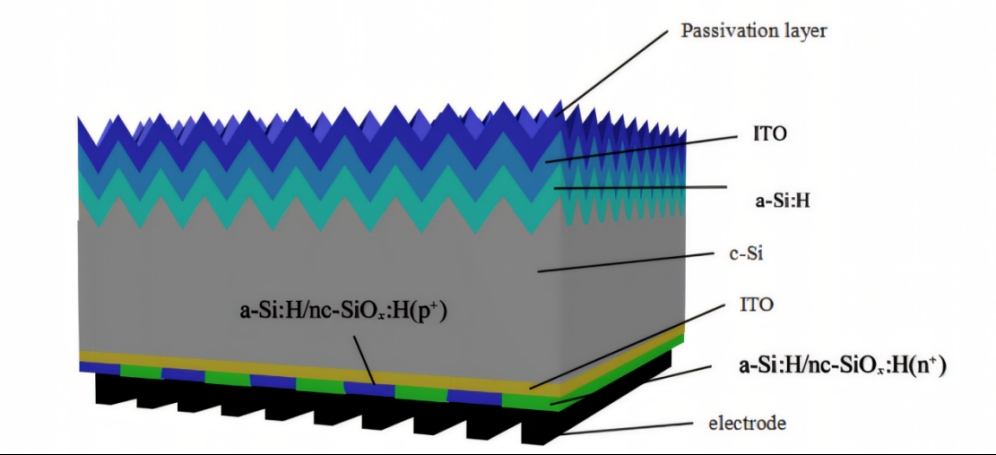Solar energy has attracted attention as a future energy source. Among the several BC cells (HPBC, TBC, HBC) for next-generation products, HPBC is a direction for the development of solar cell technology. HPBC cells combine the advantages of passivated emitter and back surface passivated contact technology (PERC) and adopt a back contact design. This structure usually forms a passivated contact on the back of the cell to reduce shading on the front and improve light absorption.
Schematic diagram of the structures of three different BC cell

HPBC(Hybrid Passivated Back Contact)Cell
HPBC cell, full name Hybrid Passivated Back Contact, is a new generation of high-efficiency solar cell technology.
Structural features: HPBC cell combines the advantages of passivated emitter and rear surface passivated contact (PERC) technology, and adopts a back contact design. This structure usually forms a passivated contact on the back of the cell to reduce the shading of the front and improve light absorption.
Passivation effect: The passivation layer of the HPBC cell helps to reduce surface recombination and increase the open circuit voltage (Voc) of the cell.
Technical features: HPBC cell technology combines TOPCon and IBC technology, and moves all the metal grid lines responsible for collecting and transmitting carriers of the cell to the back of the module, so that there is no grid line shading on the front of the cell, thereby improving the light utilization rate and photoelectric conversion efficiency.
Technical advantages: HPBC cells have the characteristics of stronger light absorption, higher conversion efficiency, more stable power transmission, more beautiful products, mature and reliable technology, etc.
Application scenarios: HPBC cells are naturally suitable for distributed photovoltaic scenarios, especially BIPV (photovoltaic building integration), which can fully combine the beauty and architectural art of BC module.

TBC(TOPCon Back Contact)Cell
TBC cell, the full name is the cell formed by combining TOPCon and IBC technology, also known as POLO-IBC cell.
Structural features: TBC cell adopts tunnel oxide passivation contact (TOPCon) technology and applies it to the back contact structure. This design takes advantage of the high passivation quality and good contact characteristics of TOPCon technology. Efficiency potential: TBC cell has high efficiency potential due to its excellent passivation performance and back contact design.
Industrialization progress: At present, the technical routes of TBC cells are all in the laboratory research stage, and there are still many problems to be solved in the advancement of the industrialization process. In the short term, the TBC cell route has a broader development prospect, because the process route of TOPCon is more mature and lower in cost than the process route of HJT, and the TBC production line is partially compatible with the TOPCon production line.
Application potential: TBC cells can be applied not only to N-type crystalline silicon substrates, but also to P-type substrates, and have great potential in improving photoelectric conversion efficiency and reducing costs.
 HBC(Heterojunction Back Contact)Cell
HBC(Heterojunction Back Contact)Cell
HBC cells, or heterojunction back contact crystalline silicon cells, are a type of high-efficiency solar cell that combines heterojunction (HJT) technology with interdigitated back contact (IBC) technology.
Structural features: HBC cells use heterojunction technology and combine it with a back contact structure. This structure usually forms a heterojunction on the back of the cell to achieve efficient carrier collection.
High efficiency potential: HBC cells are considered to be a strong candidate for high-efficiency solar cells due to their excellent heterojunction characteristics and back contact design.
HPBC, TBC and HBC cells all represent advances in photovoltaic cell technology, and they improve the photoelectric conversion efficiency of cells through different technical paths.
TBC and HBC cells are superior to classic IBC technology in terms of conversion efficiency.
HBC cells combine the surface passivation performance of HJT cells and the advantages of no metal shielding on the front of IBC cells. They have the dual advantages of large short-circuit current and high open-circuit voltage, representing the highest photoelectric conversion efficiency level of crystalline silicon solar cells.